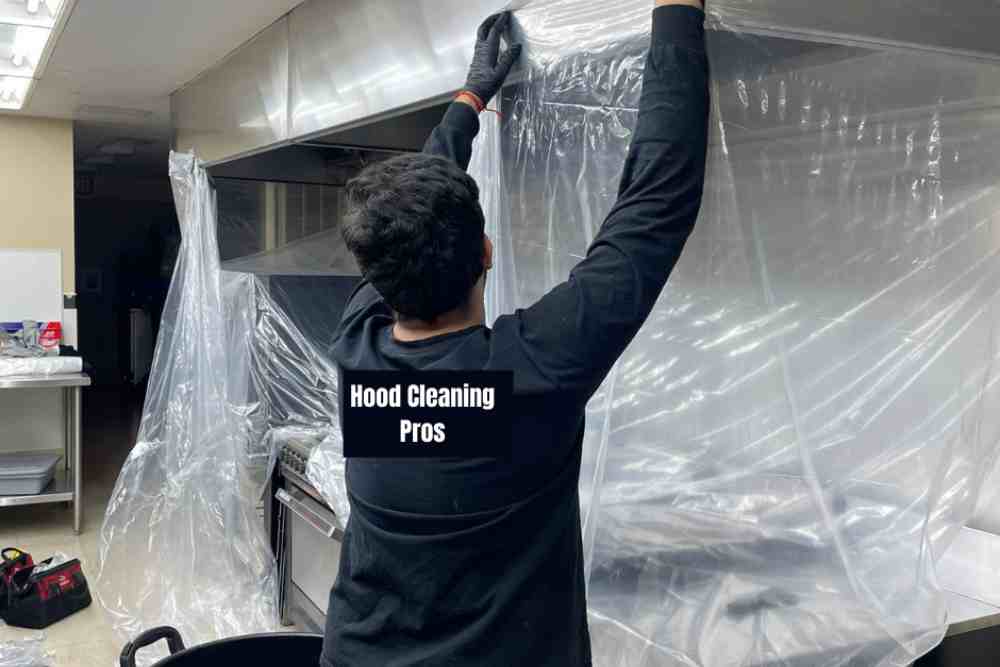How to Maintain Proper Kitchen Ventilation After Cleaning

Ontario-wide Kitchen Exhaust and Hood Cleaning – Best prices and service guaranteed.
Proper kitchen ventilation is essential for maintaining a healthy and comfortable environment in your home. After cleaning your kitchen, it is important to ensure that your ventilation system is functioning optimally to remove any lingering odors, smoke, and pollutants. In this article, we will explore the importance of kitchen ventilation, the steps to maintain it after cleaning, and the benefits of a well-ventilated kitchen.
The Importance of Kitchen Ventilation
Kitchen ventilation plays a crucial role in maintaining indoor air quality and preventing the buildup of harmful pollutants. When you cook, various gases, particles, and odors are released into the air. Without proper ventilation, these pollutants can accumulate and pose health risks to you and your family.
Here are some key reasons why kitchen ventilation is important:
- Removal of cooking odors: A well-functioning ventilation system helps to eliminate unpleasant cooking odors, ensuring a fresh and inviting kitchen environment.
- Smoke extraction: Cooking processes such as grilling or frying can produce smoke, which can be hazardous if inhaled. Proper ventilation removes smoke particles, reducing the risk of respiratory issues.
- Moisture control: Cooking generates steam and moisture, which can lead to mold growth and damage to your kitchen surfaces. Effective ventilation helps to control humidity levels, preventing these issues.
- Removal of harmful gases: Gas stoves can release carbon monoxide and nitrogen dioxide, which are harmful gases. A well-ventilated kitchen ensures the removal of these gases, protecting your health.
Ontario-wide Kitchen Exhaust and Hood Cleaning – Best prices and service guaranteed.
Steps to Maintain Proper Kitchen Ventilation After Cleaning
After cleaning your kitchen, it is important to follow these steps to ensure that your ventilation system is functioning optimally:
1. Clean the Ventilation Hood and Filters
The ventilation hood and filters are the primary components responsible for capturing grease, smoke, and other particles. Over time, these components can become clogged, reducing their effectiveness. Regular cleaning is essential to maintain proper ventilation.
Here’s how to clean the ventilation hood and filters:
- Turn off the ventilation system and unplug it from the power source.
- Remove the filters from the hood. Refer to the manufacturer’s instructions for specific guidance.
- Wash the filters with warm soapy water or place them in the dishwasher if they are dishwasher-safe. Scrub off any stubborn grease or residue.
- Clean the hood using a mild detergent and a soft cloth. Pay attention to the areas where grease tends to accumulate.
- Allow the filters and hood to dry completely before reassembling and reinstalling them.
2. Check and Clean the Ventilation Ducts
The ventilation ducts are responsible for carrying the air from your kitchen to the outside. Over time, these ducts can accumulate grease, dust, and other debris, obstructing airflow. Regular inspection and cleaning of the ventilation ducts are necessary to maintain proper ventilation.
Follow these steps to check and clean the ventilation ducts:
- Turn off the ventilation system and unplug it from the power source.
- Remove the vent covers or grilles from the duct openings.
- Inspect the ducts for any visible signs of dirt, grease, or blockages. Use a flashlight to get a clear view.
- If you notice any buildup, use a vacuum cleaner with a brush attachment to remove the debris. For stubborn grease, you may need to use a degreaser and a cloth to wipe it away.
- Once the ducts are clean, reattach the vent covers or grilles.
3. Test the Ventilation System
After cleaning the ventilation hood and ducts, it is important to test the system to ensure it is functioning properly. This will help you identify any issues that need to be addressed.
Here’s how to test the ventilation system:
- Turn on the ventilation system and set it to the highest speed.
- Check if the airflow is strong and consistent. Place your hand near the vent to feel the air movement.
- Listen for any unusual noises, such as rattling or grinding sounds, which may indicate a problem with the motor or fan.
- If you notice any issues, consult a professional for further inspection and repairs.
Ontario-wide Kitchen Exhaust and Hood Cleaning – Best prices and service guaranteed.
The Benefits of a Well-Ventilated Kitchen
A well-ventilated kitchen offers numerous benefits beyond just maintaining indoor air quality. Here are some key advantages:
- Improved comfort: Proper ventilation helps to remove excess heat and cooking odors, creating a more comfortable environment for cooking and dining.
- Enhanced safety: Effective ventilation reduces the risk of fire hazards by removing grease particles and preventing the buildup of flammable substances.
- Extended appliance lifespan: By removing grease and smoke particles, proper ventilation helps to keep your kitchen appliances, such as your range hood and stove, in good condition for longer.
- Increased energy efficiency: A well-ventilated kitchen can help to reduce energy consumption by preventing the need for excessive air conditioning or heating to compensate for heat and moisture buildup.
Ontario-wide Kitchen Exhaust and Hood Cleaning – Best prices and service guaranteed.
Maintaining proper kitchen ventilation after cleaning is crucial for maintaining a healthy and comfortable environment in your home. By following the steps outlined in this article, including cleaning the ventilation hood and filters, checking and cleaning the ventilation ducts, and testing the ventilation system, you can ensure that your kitchen remains well-ventilated. The benefits of a well-ventilated kitchen extend beyond just air quality, offering improved comfort, enhanced safety, extended appliance lifespan, and increased energy efficiency. Prioritize proper kitchen ventilation to create a pleasant and healthy cooking environment for you and your family.
Learn more about “Kitchen Exhaust Cleaning Services Near Me” right here.
Frequently asked questions about How to Maintain Proper Kitchen Ventilation After Cleaning.

1️⃣ How Often Should I Check My Filters After Professional Cleaning? 🕵️♀️
Fantastic question! Filters catch a lot of grease and particulates, which could turn into fire hazards if neglected. Ideally, you should check your filters at least once a week. If you’re operating a high-volume kitchen, you might need to check them even more frequently. A good rule of thumb is, the busier the kitchen, the more frequent the checks. 👀
2️⃣ Can I Clean the Hood and Ducts Myself Between Professional Cleanings? 🤔
You sure can, but with some caveats. Daily or weekly wipe-downs can help maintain cleanliness, but they’re no substitute for a professional deep clean. You can remove surface-level grime and grease but won’t be able to get to those hard-to-reach areas that a pro would cover. So yes, you can (and should) do regular maintenance, but keep it on the calendar for us pros to come in for the deep clean! 🗓️🧽
3️⃣ What Should I Look Out for to Ensure My Ventilation System is Functioning Properly? 🤓
Ah, excellent query! After a professional cleaning, you’ll want to keep an eye on:
- Unusual smells: Indicate a build-up of grease or other issues 🤢
- Reduced airflow: Suggests your filters might be clogged 🌬️
- Strange noises: Could be a sign of mechanical problems 🎵
If you notice any of these signs, give us a call. Better to catch issues early before they become big problems! 📞👷♀️
4️⃣ How Can I Maintain Good Air Quality in the Kitchen? 🌿
Great question! Good air quality is essential for the comfort and health of your kitchen staff. Make sure to:
- Keep your filters clean and in good condition 🌬️
- Ensure your exhaust fans are working efficiently 🌀
- Use natural ventilation methods when possible, like open windows 🪟
Doing these can significantly improve the air quality, making for a happier and more productive kitchen environment! 😄
5️⃣ Are There Any Daily or Weekly Practices to Keep My Kitchen Ventilation in Top Shape? 📆
Absolutely! Daily practices include:
- Checking and cleaning the filters 👀
- Wiping down accessible parts of the hood and fans 🧽
- Keeping an eye on the overall system performance 🔍
For weekly practices:
- Conduct a more thorough check of filters and replace if necessary 🔁
- Check for unusual noises or vibrations in the exhaust fans 🔊
Consistent monitoring and basic cleaning can go a long way in keeping your kitchen ventilation system in top condition between professional cleanings. 👌
- hood cleaning
- How to Maintain Proper Kitchen Ventilation After Cleaning
- kitchen exhaust cleaning
- restaurant hood cleaning






